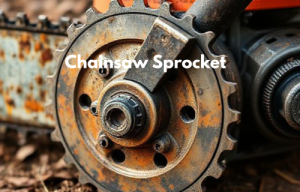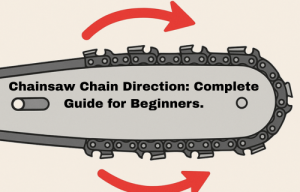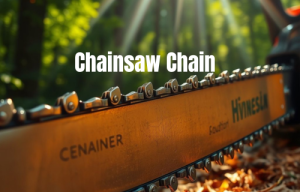Top Chainsaw Myths That Just Aren’t True.
Introduction
Chainsaws have a long and varied history, but many enthusiasts may stumble upon some myths associated with them. For both novices and experienced users, chainsaw misconceptions can compromise safety guidelines and reduce the efficiency of using tools. These myths are contradicted with appropriate replacements throughout the text to make sure your safety is prioritized while working smarter, using STIHL chainsaw as an example is Known for their reliability and cutting-edge technological advancements, they set the example of quality standards in modern chainsaw designs. It is essential for any professional or enthusiast in this field.
Table of Contents
ToggleExposing Popular Chainsaw Myths
Myth 1: Bigger Is Always Better
Many believe that a larger chainsaw automatically means better performance. However, size alone doesn’t guarantee efficiency. In fact, using a chainsaw that’s too large for the task can lead to fatigue and safety hazards. A well-balanced chainsaw, especially mid-sized models, often outperforms oversized competitors because they are designed with both power and usability in mind.
- For instance, a medium-sized STIHL chainsaw is ideal for general yard work, delivering power with precision.
- Conversely, oversized saws can be cumbersome and risky for smaller jobs.

Myth 2: Chainsaw Chains Don’t Require Frequent Sharpening
For more insights into sharpening misconceptions, check out this Northern Woodlands – Myths and Mistakes of Chainsaw Sharpening.

Myth 3: Chainsaws Are Inherently Unsafe
While chainsaws can be dangerous, the myth that they are inherently unsafe ignores the real culprit: improper use. In fact, the majority of chainsaw accidents stem from operator error, lack of training, or failure to use safety gear.
Modern STIHL chainsaw models come equipped with safety features like chain brakes, anti-vibration systems, and inertia-activated kickback protection. Over time, Chainsaw History has evolved to prioritize user safety with smart innovations.

Myth 4: Old Chainsaws Are Just as Good as New Ones
People can be very nostalgic about their very old models, so one can certainly understand why someone may enjoy using a 20-year-old saw. Even though older models were often more durable than contemporary options, today’s saws are far superior in terms of safety standards, emissions, and overall ergonomics. Chainsaw History shows a clear evolution from rugged durability to refined, user-focused design proving that modern advancements truly benefit today’s users.
Premium chainsaws models like “STIHL” offer marked improvements from previous models by incorporating low-emission engines alongside anti-vibration handles and tool-free chain tensioning. These patented innovations, alongside boosted comfort, make them stand out.
Myth 5: For 2-Stroke Chainsaws, Mixing Oil Isn’t Necessary
A chainsaw using improper mixing ratios of oil and fuel will sustain great damage. Some users “eying” the mix, thinking it “close enough,” is bound to create performance issues or worse, engine failure.
Appropriate mixing is methodical, which is why STIHL provides recommended ratios with the option of pre-mixed fuel-oil blends to eliminate guessing altogether. Without a doubt, spending less than two minutes to achieve precise ratio marking greatly serves the engine’s longevity.
🎥 Chainsaw Myths about Safety
Conclusion
Chainsaw myths can persist due to a lack of updated information or just bad practice, as STIHL puts it, but getting these facts right can have massive effects on one’s experience using them. Therefore, guiding smarter information backed by safety checks over faulty procedures and unreliable equipment paints an alternative picture for many folks out there makes all difference in the world tools you wish to use matters thus skipping to paying premium chainsaws like having a STIHL ensures top notch technology duo-ed with all needed staples makes it hard lacking safety features while having optimal work done turns arms lethal-less.
✅ Stay Safe, Cut Smart.
📌FAQs
Common myths include “bigger is better,” chains don’t need frequent sharpening, and that all chainsaws are inherently dangerous.
Maintenance is crucial for performance, longevity, and user safety. A poorly maintained saw is more likely to malfunction.
STIHL is renowned for quality, innovation, and durability. While other brands offer good options, STIHL is often the go-to for professionals.
Related Post
Chainsaw Sprocket Maintenance: A Beginner’s Guide.
Chainsaw Sprocket Maintenance: A Beginner’s Guide....
Read MoreBest Practices for Storing Chainsaws in a Shed or Garage.
Best Practices for Storing Chainsaws in...
Read MoreWhat Is Chainsaw Idle Adjustment and How to Achieve It?
What Is Chainsaw Idle Adjustment and...
Read MoreChainsaw Chain Direction: Complete Guide for Beginners.
Chainsaw Chain Direction: Complete Guide for...
Read MoreWhy is my Chainsaw Chain not moving?
Why is my Chainsaw Chain not...
Read MoreWhy Does My Chainsaw Bog Down When Accelerating?
Why Does My Chainsaw Bog Down...
Read More




